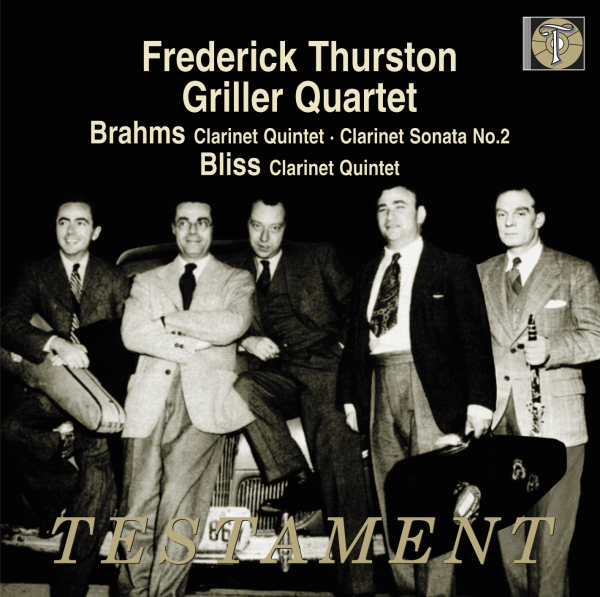Logowanie
Mikołaj - ten to ma gest!
Miles Davis, Horace Silver, Jay Jay Johnson, Percy Heath, Kenny Clarke, Lucky Thompson
Walkin'
20bit K2Super Coding - ale jak to brzmi!
Kasety magnetofonowe
Winylowy niezbędnik
ClearAudio
Double Matrix Professional - Sonic
najbardziej inteligentna i skuteczna pralka do płyt winylowych wszelkiego typu - całkowicie automatyczna
BRAHMS, BLISS, Griller Quartet
Clarinet Quintet, Clarinet Sonata No. 2, Clarinet Quintet
Strong, purposeful performances of both the Brahms and the Bliss Quintets, recorded in wartime in single takes and never previously issued. - BBC Music Magazine, December 2005 These performances by clarinet virtuoso Frederick Thurston (1901-1953) of the BBC Symphony Orchestra would, one would have thought, belonged on Michael Duttons label; but their appearance on Testament, courtesy of the quiet transfers of Roger Beardsley, is no disappointment. The 15 May 1941 Brahms Clarinet Quintet is quite literal in approach, even to keeping the opening Allegro introduction up to full speed from the outset, and not treating the first bars as a gradual accelerando. The Griller Quartet (1931-1963), for whom Ernest Bloch composed his last four quartets, had a reputation for rhythmic impetus and clean, articulated musical lines. The setting for the last two movements of the Brahms is brisk and evenly flowing, and the quality of Thurstons dark, chalumeau register is liquid and earthy. Thurston, by the way, recorded the Quintet two days after having inscribed for Decca the F Minor Brahms Sonata with Kathleen Long, a performance that has never been released. Thurston has a long association with Britains clarinet repertory, having played the Stanford Concerto as early as 1920, and later giving the premier of the Arthur Bliss Clarinet Quintet (1931) with the Kutcher Quartet in 1933. The Decca recording here restored dates from late August 1935. Like much music by Arthur Bliss, the Clarinet Quintet is lithe and energetic, albeit not particularly blessed with singing melodies. There are classical procedures at work, fugatos and intricate part-writing in Beethoven-like manner, to be sure, but the musical materials tend to move hastily toward the meat of the work, the Adagietto espessivo, where Thurston and Griller ensemble shine, or shimmer, to be exact. The last movement Allegro energico has a fleet, rangy athleticism that makes one wonder how Thurston might have fared in Nielsen Concerto. The Brahms E-flat Sonata 20 April 1937 has an easy facility of expression, though the piano sonority seems a bit thin. The second movement Appassionato, ma non troppo moves at brisk clip, the clarinet and piano engaged in a hasty dialogue where Thurstons breath control proves prodigious. The bubbly perky playing of the last movement attests to a happy, even glib moment of old-school ensemble. (Gary Lemco, AudiophileAudition.com)































